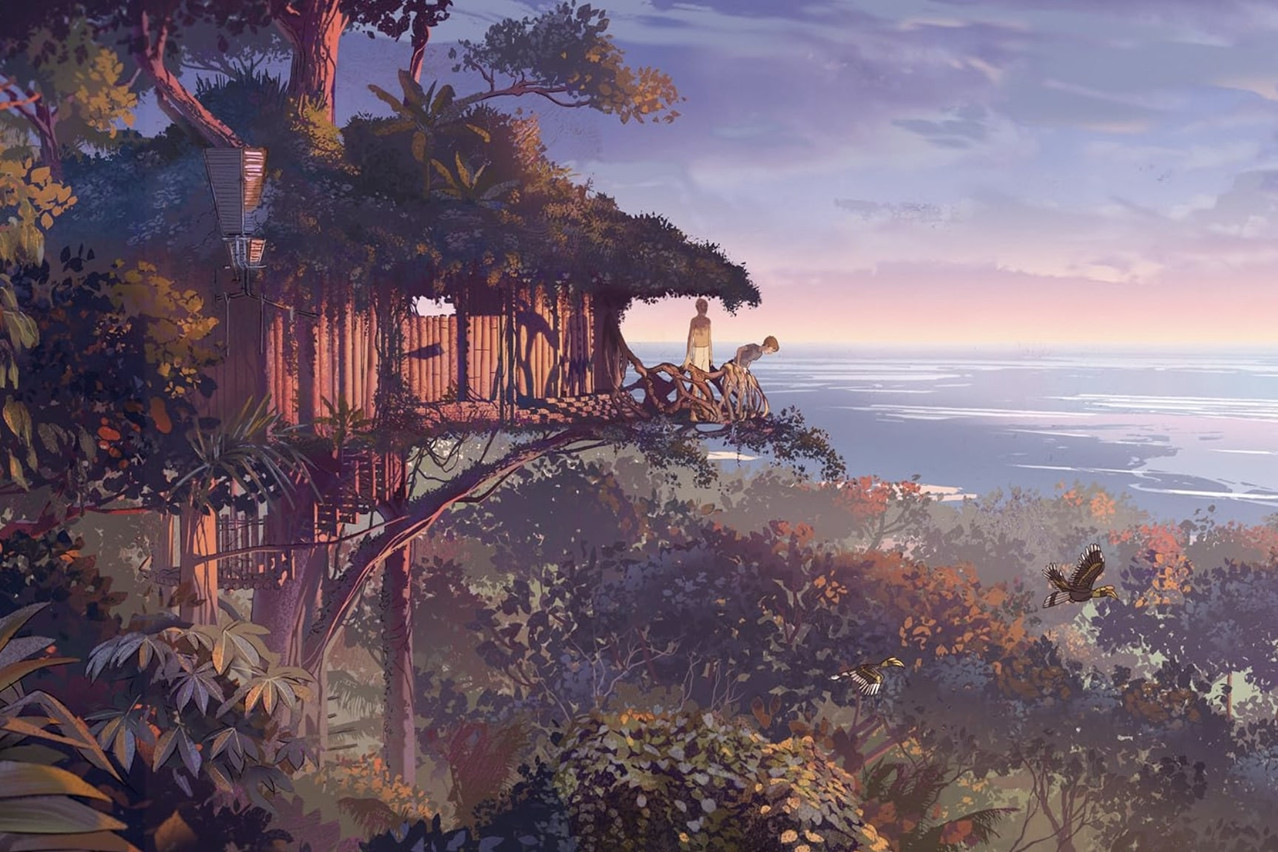A family on a sailing expedition around the world, a boy who smuggled his dog aboard, a violent storm, a giant wave, a desolate island--
“When it came to the end of the film, there was one little girl (about eight or nine) who said: ‘I like how the end of the film is both happy and sad at the same time… but although it’s sad, I realised that it had to happen.’ And it was such a beautiful comment, because it was like--it was clearly her first brush with a bittersweet moment.”
This quote is from Neil Boyle, co-director of Kensuke’s Kingdom, speaking about a test screening of the film. “It’s that point in your childhood,” he continues, “when you move on from the goodies and the baddies--where everything is black and white--and begin to realise the world is a little bit more complex, that something can be good and bad at the same time.”
Kensuke’s Kingdom is indeed happy and sad. Despite being a kids’ movie, it works hard to integrate themes of hardship and loss: our protagonist is a 12-year-old boy (Michael) who is separated from his family and meets, after washing up on an island, an elderly man (Kensuke) with a tragic past (though, it must be said, a fabulous treehouse). A band of orangutans completes the primate population of the island, but they live in mortal danger of a nasty cadre of poachers who occasionally pop in to ruin lives.
Thematically, the “happy” and “sad” of the film cohere around family: families are broken apart, formed again in unlikely places, broken apart once more--they cross species lines, cultural lines, language lines--and viewers alternatingly feel hope and woe that eventually, as the girl at the test screening suggested, come together in one dynamic suckerpunch of emotion.
“Hopefully, we don’t traumatise!” says Boyle.
Boyle, along with his co-director Kirk Hendry and Michael Morpurgo (who wrote the 1999 book that the film adapts), all agree that children ought to engage with tough issues and have some sense of reality. “It’s a helpful process in growing up,” says Boyle, “to--whether it be a book or a film--deal with these dark aspects and, importantly, how the characters get through them and come out the other side.”
Pure cinema
“What [Kirk and I] don’t like is endless close-ups of people talking,” says Boyle, asked about the process of adapting the book for the screen, “which we think is really boring. We like this idea of ‘pure cinema,’ which is almost like silent cinema, where you try to find visual equivalents for everything, to strip the dialogue out.”
In the movie, these efforts are observable in the granular, as in a passing depiction of a little bug on a leaf who has eggs (creating visual echoes of the theme of family); in plot-beats, as when Kensuke draws a line in the sand and Stella (the dog) makes Michael understand that it ought not be crossed; and in the macrocosmic, as when Michael relates to Kensuke’s pain by looking at the latter’s paintings, which depict the man’s tragic backstory.
“We would take pages of dialogue and go: ‘Okay, how do we how do we take the emotional beats in this scene and make it work with no one speaking?’ Which was hard, but really fun.”
The low-dialogue approach works especially well, given the film’s other major theme, which is communication. Michael and Kensuke do not share a language or a generation; nor, of course, can the animals talk. These constraints mean that the emotions of the film are necessarily intensified via simplification, as, for example, the treachery of the poachers must be shown rather than discussed, or the two humans must understand each other through expressions, body language and their own artwork.
For adults, these emotional beats are fairly visible on the horizon of each scene, but then the film is meant for kids. Besides being merely an exciting story it is probably a useful movie for, as Boyle suggests, challenging children on hard topics like sorrow and death (without being quite as javelin-to-the-heart as, say, Bambi).
“The thing Kirk and I worked so hard on was to get a deep emotional reaction in the film, beyond the usual cartoon laughter that you get in animation, something that actually resonates,” says Boyle, admitting that he had moments of doubt (“Am I crazy? Is this stupid?”) as to whether any of it would land.
“But when we had our first screenings and the lights came up, and people genuinely were crying and were moved--and even contacted us and said ‘I’m still thinking about the film… still talking about it with the kids’--that was just the most beautiful thing, that it had connected with people.”
“And I say that without any sense of ego,” he adds, modestly, “not that it’s particularly to do with me and Kirk--but the whole team of artists that came together.”
About
Kensuke’s Kingdom debuted in Luxembourg at the Lux Film Fest this past March, and will be released generally in the country on 5 June 2024.
Two Luxembourg companies have been involved in the project, Melusine Productions (production) and Tarantula (distribution).
Frank Cottrell-Boyce adapted the book for the screen and it stars Aaron MacGregor, Ken Watanabe, Cillian Murphy and Sally Hawkins.
